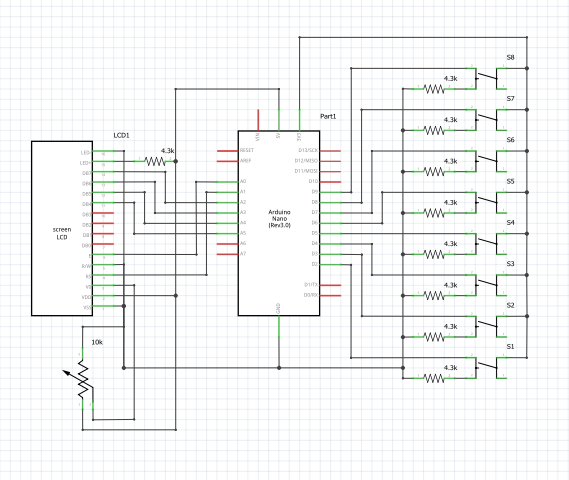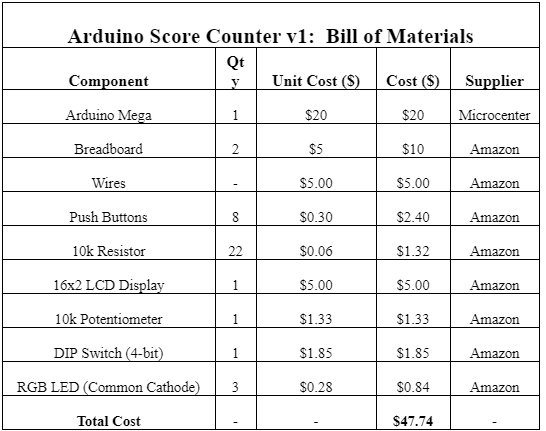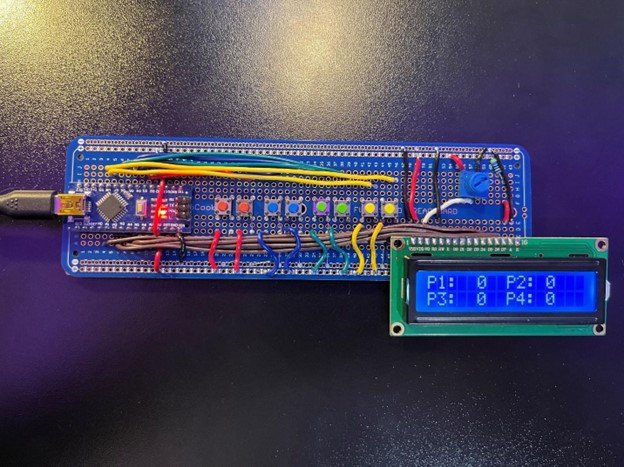
Score Counter I
Arduino Nano
2022
Introduction
It is often when a family or group of friends plays cards or board games that the person stuck with having to keep score resents this fact. Often, the average person is not up to the challenge of simultaneously keeping score and having fun sharing time with their loved ones.
In order to counteract this tyranny forced by circumstance upon the unfortunate individual, this project strives to make score keeping much easier by providing an electronic aid, therefore lightening the burden placed upon whichever individual volunteers to keep score. This project aims to make such an electronic score keeping aid, or score counter for short, a practical reality.
In all these versions of the score counter, the coordination of the inputs and outputs will be done via software integration to provide a fully functional score counting device that will be accessible for use by a wide range of consumers.
Design
This first version of the score counter is a simple 4-player, one screen implementation of the basic functional ideas presented in the introduction, run on an Arduino Nano microcontroller. The primary purpose of this version of the score counter will be to get a solid foundation for the basic functional software being used in conjunction with the hardware.
For outputs, the Nano will have a 16x2 LCD screen and 3 RGB LEDs. For inputs, the Arduino Mega will have 8 push buttons and one four-position DIP switch.
The LCD screen will be used to display the players’ scores in real time, as decided by the user via the push button inputs. The display contrast of the LCD screen will be determined by the angular displacement of a 10kΩ potentiometer. The RGB LEDs will be used to flash certain colors based on which player’s buttons are being pressed. Each player will have their own unique color identifier.
The 8 push buttons will be divided amongst the four players, each player having two dedicated buttons. One button will be for incrementing the score up and another for incrementing down. The four-position DIP switch will be used to determine the game being played, and therefore the increment by which the scores will change. The first three switches, which will be used to determine the increment setting, will provide eight different options for incrementing the scores by. The final switch will be used to change the score counter into ‘Congrats Mode’.
In ‘Congrats Mode’, the Nano will compare the real-time scores and announce a winner on the LCD screen. In addition, once ‘Congrats Mode’ has been activated, the RGB LEDs will flash the winner’s unique color identifier.
Schematic
Bill of Materials
As is shown in the following table, the total cost associated with the first version of the score counter came out to be just under $48. This cost makes the score counter unfeasible for commercial consumers but will work for personal use.
Results
Results
The score counter present is plug & play, meaning as soon as the device is plugged in, it immediately pulls up the scores on the display and is ready to start incrementing. The following figure displays exactly what the project looks like immediately after energizing the circuit.
*Note: While this version of the score counter has been lost to time, for illustration purposes, please see the following images for information about the final functionality.




